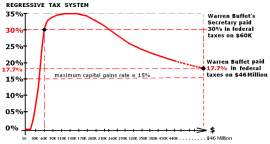
Save Time and Paper With Income Tax E-Filing

What is income tax E-filing?
E-filing is a relatively new system instituted by the Internal Revenue Service, which allows an individual taxpayer to submit tax documents to the United States Federal Government through the Internet or a direct connection. E-filing allows a taxpayer to submit their tax returns and tax forms without the need to mail or submit any paper documents.
E-filing is accomplished through tax preparation software offered by the Internal Revenue Service. Tax preparation software with e-filing capabilities are made available and offered as stand-alone programs or through private websites who offer programs distributed by major software vendors for commercial use.
Of the 143.4 million U.S. returns filed in the fiscal year of 2008, nearly 60 percent were filed electronically. In 2010, a sum of 129.3 million U.S. was filed and of that number, nearly 94 million were filed electronically. Through these statistics, one can evaluate that e-filing has become the dominant form of filing taxes; nearly 73% of all returns were filed electronically in 2010.
E-filing is the preferred filing method for individual tax returns because it is a streamlined method; E-filing offers an individual taxpayer faster refunds, greater accuracy, a secure and confidential platform, the elimination of tangible paper, and quicker confirmation.
The Internal Revenue Service offers an individual to e-file their Federal and State tax returns. Federal/State e-file enables the electronic filing of both Federal and state income tax returns simultaneously. The elecontric filing software offered by the IRS places a taxpayer’s Federal and state return in separate data packets. These packets are transmitted to the Internal Revenue Service in one taxpayer “envelope.” The IRS then functions as an electronic post office for the participant state, which will receive and subsequently process the electronic return.
Currently 37 states and Washington D.C. participate in Federal/State e-filing. Currently Alaska, California, Florida, Maine, Massachusetts, Minnesota, Nevada, New Hampshire, South Dakota, Tennessee, Texas, Washington, and Wyoming do not offer e-filing privileges for their citizens to electronically file their state tax returns.
When participating in E-filing, the individual taxpayer must acquire and provide Forms W-2, W-2G, and 1099-R to formally authorize the Internal Revenue Service’s e-file provider.
The income tax e-filing has been undertaken by the majority of individual taxpayers because of the expedited process that the system offers. Typically when an individual files their taxes they are disheveled by the amount of forms needed. Additionally, the process with tangible papers is time-consuming; as a result, the majority of taxpayers opt to file their taxes electronically (a free-of-charge service) to better organize and streamline their tax returns.
NEXT: The Most Important Income Tax Forms





















